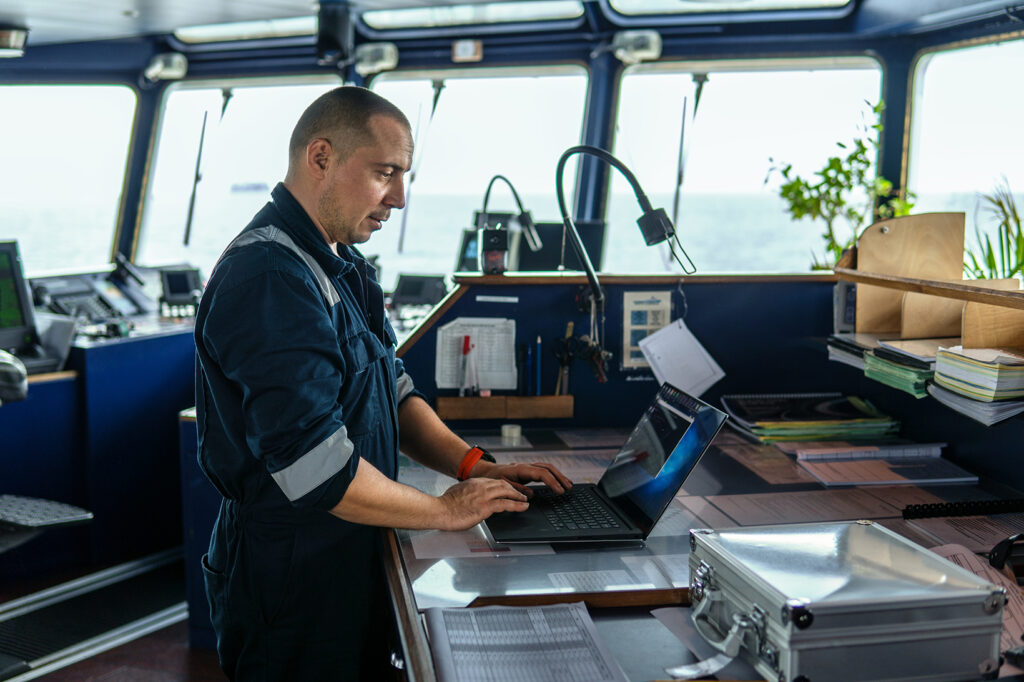
The vessel management software market offers no shortage of options. Valued at $1.8 billion in 2023, it’s expected to more than double to $3.95 billion by 2030, growing at an annual rate of 11.2%. With so many options to choose from, selecting the right software can feel overwhelming. To guide your decision, focus on features that truly improve operations and deliver measurable results.
Top 5 Outcomes the Right Vessel Management Software Can Offer
1. Automation makes contract and jobs management easier.
Managing freight contracts and job scheduling manually can be overwhelming and prone to errors. The right vessel management software automates these tasks, ensuring precision and consistency while freeing your team from administrative burdens.
Software like BargeOps takes contract management to the next level with advanced features designed to handle the complexities of inland marine operations. It supports origin- and destination-based freight rates, allowing for scheduled rate escalations that adapt to changing market conditions. Additional features like demurrage support and draft-based tonnage calculations ensure that even the most detailed aspects of freight management are accounted for.
For example, when creating a barge ticket with a referenced contract number, BargeOps automatically applies the correct pricing and terms, streamlining invoicing from start to finish.
BargeOps automates freight and demurrage billing, reducing the time and effort required to process invoices. To keep your operations data-driven, we offer a robust report suite that tracks critical metrics such as contracted versus actual freight quantities, demurrage billing, and ton-mile reports. These reports are customizable to meet specific client requirements, providing the insights needed to make informed decisions and improve efficiency.
2. Compliance no longer keeps you up at night.
Regulatory compliance can feel like a constant burden, especially when it comes to meeting the EPA’s Vessel General Permit (VGP) requirements. Penalties for non-compliance are steep, and many companies rely on outdated processes like paper forms and spreadsheets to track inspections and compile reports. These methods are not only time-consuming but also prone to errors, making compliance a source of ongoing stress.
Modern vessel management software simplifies compliance by automating critical workflows. For example, BargeOps helps streamline compliance in several impactful ways:
- Crews always have access to the latest forms directly within the application, avoiding the risks of outdated paperwork.
- Forms for all of your VGP needs are pre-populated with relevant details like vessel name, fleet location, and barge information, saving time and reducing errors.
- Compliance tasks are integrated into workflows, with the system notifying crews when forms are required. Crewmembers can complete, sign, and submit forms digitally.
- BargeOps tracks changes to forms and allows them to be printed individually or in batches, supporting flexibility and record-keeping.
By reducing manual effort and ensuring accuracy, your team can worry less about meeting regulatory requirements and focus on running efficient operations.
3. Terminal operations run like clockwork.
Terminals are a hub of activity, with commodities arriving, departing, and transferring to other modes of transportation like trucks or rail. Managing this complexity manually can lead to inefficiencies, miscommunications, and lost revenue.
The right vessel management software simplifies terminal management by automating inventory tracking, coordinating intermodal transfers, and integrating billing processes. For instance, BargeOps tracks inventory in real time, links it to the customer who owns it, and ensures seamless billing under the appropriate contract. By reducing the administrative complexity of terminal management, the software helps keep goods moving efficiently and operations running smoothly.
4. Information flows seamlessly between dispatch, vessels, and billing.
In dynamic environments, miscommunications and outdated information can disrupt everything from fleet schedules to invoicing. Sharing files and communicating within disconnected platforms often leads to:
- Version control issues
- Scheduling conflicts
- Incorrect data that impacts fleet coordination
A centralized, real-time platform eliminates these challenges by ensuring all teams—dispatch, vessels, and billing—have access to accurate and up-to-date information. Software like BargeOps creates a single source of truth, streamlining workflows and ensuring that everyone is working from the same data. This seamless communication reduces errors, prevents delays, and keeps operations aligned.
5. Your customers are empowered by on-demand updates.
Modern customers expect instant access to updates on their shipments, and relying on phone calls or emails to provide this information is inefficient. Customers want transparency and control, and the right software can deliver both.
For example, the BargeOps Portal allows customers to securely access real-time updates through a web browser. Permissions can be customized to ensure they see only the information relevant to them. This on-demand access reduces the need for your team to handle routine inquiries while improving the customer experience. Giving your customers the tools they need strengthens your relationships and positions your company as a reliable and efficient partner.

Ready to Make Your Decision?
Selecting the right vessel management software is about more than comparing features—it’s about finding a solution that can be customized to achieve the results you’re looking for. We invite you to schedule a free demo to see the unique benefits of BargeOps solutions. Contact us today to learn more.


